Raised beds make gardening easier and more successful. There are many advantages of growing plants in raised beds. But, the bed may lean over or bow at a point. But with the simple steps that I will share, you can keep them from bowing.
To stop the bed from bowing, you need to stabilize your raised beds, use strong materials to build the bed, and even reinforce it to prevent the bowing in the future. You also need to maintain the bed regularly and avoid overwatering to prevent bowing from time to time.
Some reasons for bowing beds could be heavy plant or soil, slope areas, or weak material. This guide will share the reasons behind bowing and how to protect and prevent the bed from bowing.
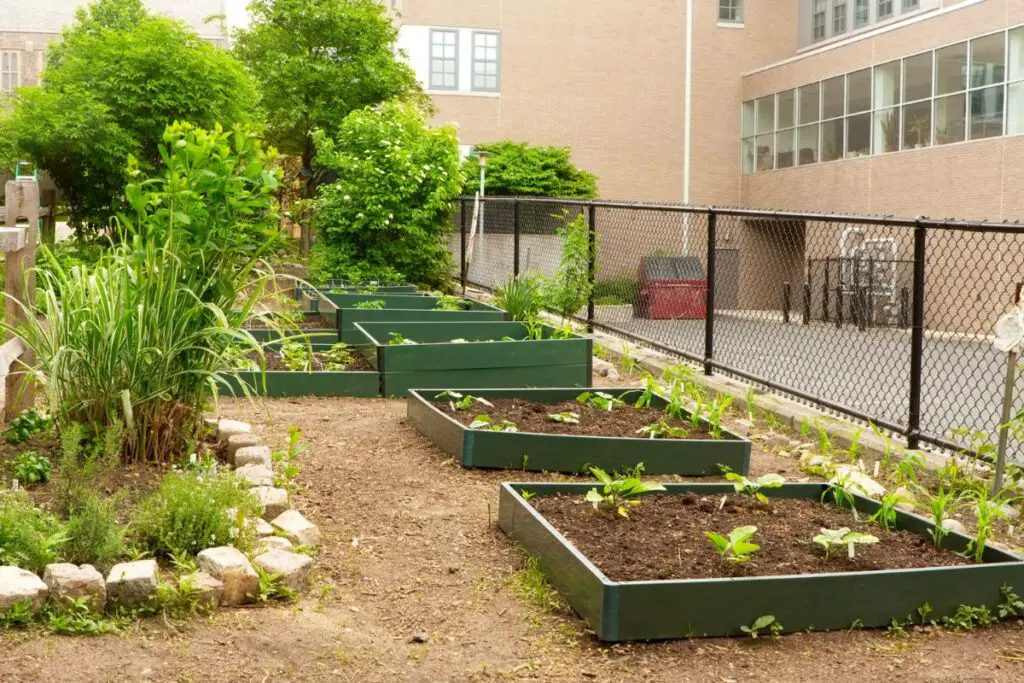
Why do raised beds keep bowing?
When you make a raised bed, it stays fine for some years.
Slowly, it will start bowing at one side.
Your bed will seem shapeless and look awkward.
There could be several reasons behind raised beds bowing in different directions.
It will start bowing in one direction, indicating that the bed is getting weaker in that area.
Here are some common reasons behind bowing of the raised garden beds:
Raised beds made of poor materials
The materials you used to create your raised beds are not strong enough to hold adequate soil.
You might have used light materials like very old fencing woods and branches or worn-out woods.
These types of materials are not capable of holding lots of soil.
So, if you make beds out of these materials and fill up the beds with lots of soil and plants, ultimately, your bed will bow at the point where there will be more pressure.
The bed doesn’t have enough or any support.
A lot of people give extra support to their raised beds so that the beds don’t bow or fall over.
You might not have used any support for your raised beds.
Over time, due to the heavy weight of the soil and the plant as well, the bed may bow.
Giving them proper support can prevent the bed from bowing and keep it in proper shape and size.
Anchoring the raised beds can keep the beds from bowing or leaning over.
Looking for gardening supplies? We have tested 100's of products before recommending them to you guys. Check out our best pick below:
| Image | Gardening Supplies | Best Price? |
|---|---|---|
 Top
Top Top
Top | Raised Garden Bed Kit | Check On Amazon |
 | XLUX Soil Moisture Meter, Plant Water Monitor, Soil Hygrometer Sensor for Gardening, Farming, Indoor and Outdoor Plants, No Batteries Required | No Results |
 Top
Top Top
Top | 82 Pcs Garden Tools Set and Extra Succulent Tools Set | Check On Amazon |
 | Joeys Garden Expandable Garden Hose with 8 Function Hose Nozzle, Lightweight Anti-Kink Flexible Garden Hoses, Extra Strength Fabric with Double Latex Core, (50 FT, Black) | No Results |
 Top
Top Top
Top | Dual Chamber Compost Tumbler | Check On Amazon |
 Top
Top Top
Top | Sunnyglade Plant Stakes | Check On Amazon |
 Top
Top Top
Top | Organic Cold Pressed Neem Seed Oil | Check On Amazon |
 Top
Top Top
Top | Mighty Mint Gallon :-Insect and Pest Control Peppermint Oil | Check On Amazon |
 Top
Top Top
Top | Scotts DiseaseEx Lawn Fungicide | Check On Amazon |
 Top
Top Top
Top | Jacks Classic 20-20-20 All Purpose Fertilizer | Check On Amazon |
 Top
Top Top
Top | 30,000 Seeds Pollinator Attracting Wildflower Mixture | Check On Amazon |
 Top
Top Top
Top | Survival Vegetable Seeds Garden Kit-Over 16,000 Seeds | Check On Amazon |
Excessive moisture
Bowing of the raised beds made of wood can bow due to excessive moisture levels.
The more moisture the soil will hold, the heavier it will become.
Heavy soils due to excessive moisture push the bed against its wall and force it to bend or bow over time.
The heavier the soil becomes, the more the bed will bow over.
Besides the soil, the wood will also get weak due to too much dampness.
As a result, it will sometimes fail to hold the soil and start bowing.
The wood is old.
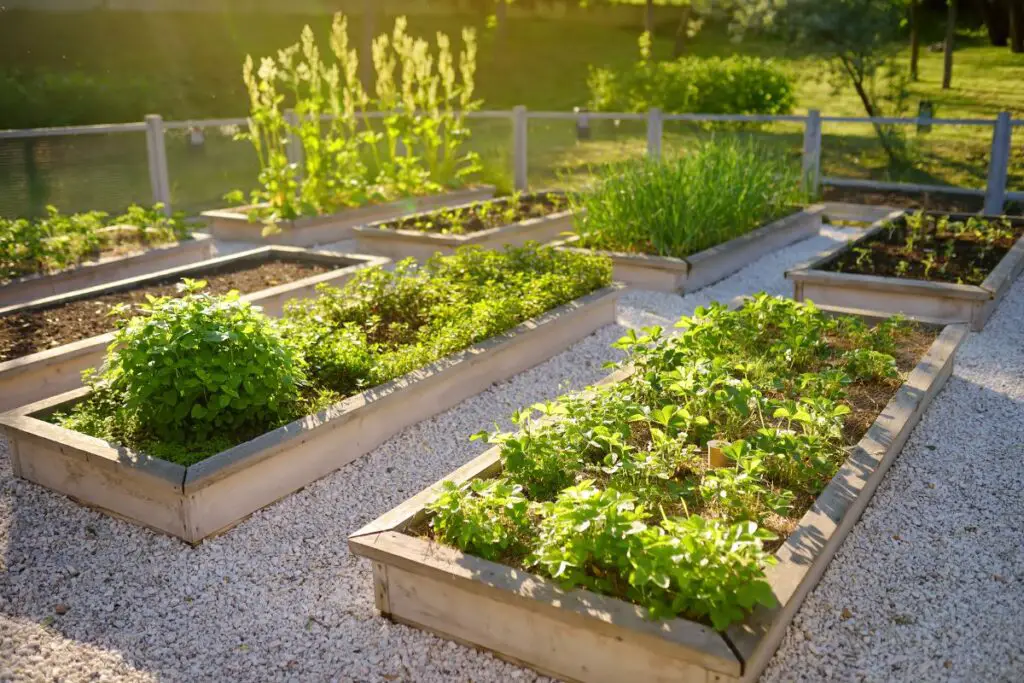
Most people make their raised beds out of wood or lumber.
It is easily available, holds the soil in place greatly, and stays fine for a long time.
But after one point in time, the wood loses its strength and ability to hold the soil and the plants.
When you water the plant, the soil’s heavy weight makes the bed bow down, starting from the weakest direction, where the bed feels more pressure.
That direction could be anywhere in the bed.
Slowly, it will bow in that direction and ultimately fall over.
Areas are slightly sloped.
When you stay in areas with slight slopes, your raised beds are bound to bow or bend in a particular direction.
That is why many people consider anchoring the raised beds so that everything inside and the bed itself stays in its position and proper shape.
Without proper reinforcement, the bed will bow and lose its shape.
Over time, the bed will bend too much and fall over.
How do you keep the raised beds from bowing?
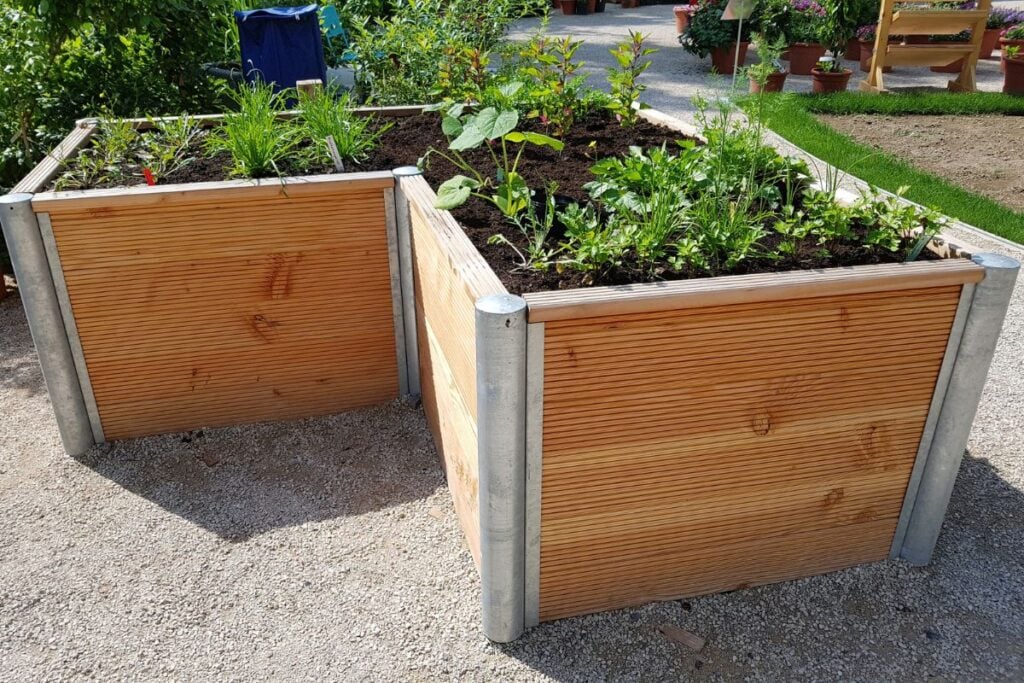
Consider bowing as a negative point when you recall the things that might go wrong while creating raised beds.
Bowing is a common issue with raised garden beds.
Many people overlook this point, create the bed at a place of their choice, and start gardening.
But, that is not how you do these things.
Before you start creating the bed, you have to consider these extra points that need to be done while creating the bed.
If you don’t take steps from the beginning, you have to do it later at some point. In that case, the struggle will be more.
But, taking steps at the beginning while creating the bed will save you extra time and effort.
So, here are some easy steps to prevent the raised beds from bowing:
1. Stabilize the raised bed
The first and foremost step you should take to prevent the raised bed from bowing is to select a stable ground.
Areas with slopes have inclined land surfaces, and the chances of bowing in the raised beds are higher.
So, to prevent this, select a ground with a flat surface where your raised beds will remain stable without any bending or bowing.
Even concrete areas can be inclined if the construction is not done properly.
If you create beds in the ground of your garden, make sure it is flat.
You must also ensure that the base of the raised beds has a well-packed ground level.
The ground has to be strong enough to hold the bed, the soil, and the plants.
Concrete areas are best as they are stronger than soil ground.
Place the bed against an existing wall or fence to stabilize your raised bed further.
The wall or fence will give your bed extra support and keep at least one side of your bed from bowing.
Not all people are lucky to have flat grounds.
If you live in slope areas, your land will be inclined, and you have nothing to do with the land here.
But, to secure your garden beds, you must stabilize them by anchoring them.
Anchoring gives support to your beds. Read on to know more.
2. Use strong materials to create raised beds.
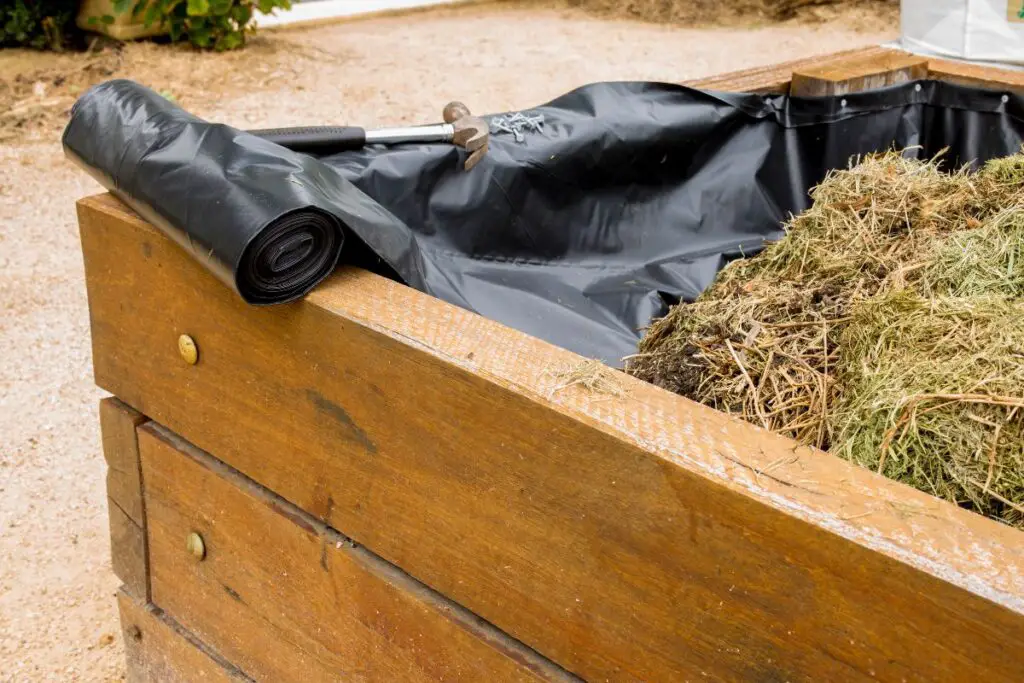
Using strong and steady products to create raised beds can keep your bed from bowing either for a long time or forever.
If you create beds with wood or lumber, your bed will stay fine for a very long time, provided you have kept them over flat surfaces.
Woods of cedar, cypress, oak, redwood, etc., are great for creating strong raised beds for your plants.
If you want to shift to a stronger, rather concrete one, you may try masonry, bricks, and natural stones for making beds.
They have a lifetime guarantee.
A lot of people use pallets to create beds.
In that case, you must avoid the MB (methyl bromide) pallets and reach for the HT (heat treated) pallets.
They will look unique in your garden.
Pallets’ lifespan depends on the quality.
Most of the time, the woods are softer, for which the bed lasts only 5 years.
So, soon they will start bowing. But those made of oak trees will last longer.
Most people prefer the woods because they are easily available and affordable.
They might not be as concrete as bricks and stones, but they will last for 10-20 years or even more.
The wood will start bowing slowly when it gets very old and soft.
If you are using lumber, go for pressure-treated lumber.
You can make the corners at 4x4s and the sides with 2-inch thick boards.
The thicker the material, the less bowing you will see.
3. Give support to the raised garden beds.
There are many ways to give support, and one of the common methods is anchoring.
Anchoring is usually done with the beds kept over sloped areas where there are chances of beds falling over or bending.
For anchoring, you can use products like wooden stakes or metal rebars.
Please place them in every corner of the raised bed at proper positions and drive them into the ground.
The anchoring products have to be around 2 inches by 18 inches.
It gives you enough space for driving into the ground and gives the bed sufficient support.
In the case of wooden stakes, you can attach and screw them with the beds while making one.
Place them at the corners, create holes into the stakes 3 inches apart, and screw them into the raised bed with galvanized screws.
You can also give extra support in the middle of the bed.
You can also use metal brackets at the corners for additional support.
Since heavy soils sometimes lead to bowing, you may add a beam at the center between the dirt to support the soil.
It will keep the soil in place and prevent bed bowing.
If you have not given any support when creating the beds, you can give it later when bowing occurs.
If you have already given support through anchoring, you can still support the bed later at specific intervals.
4. Minimize the use of excessive water in your raised garden beds.
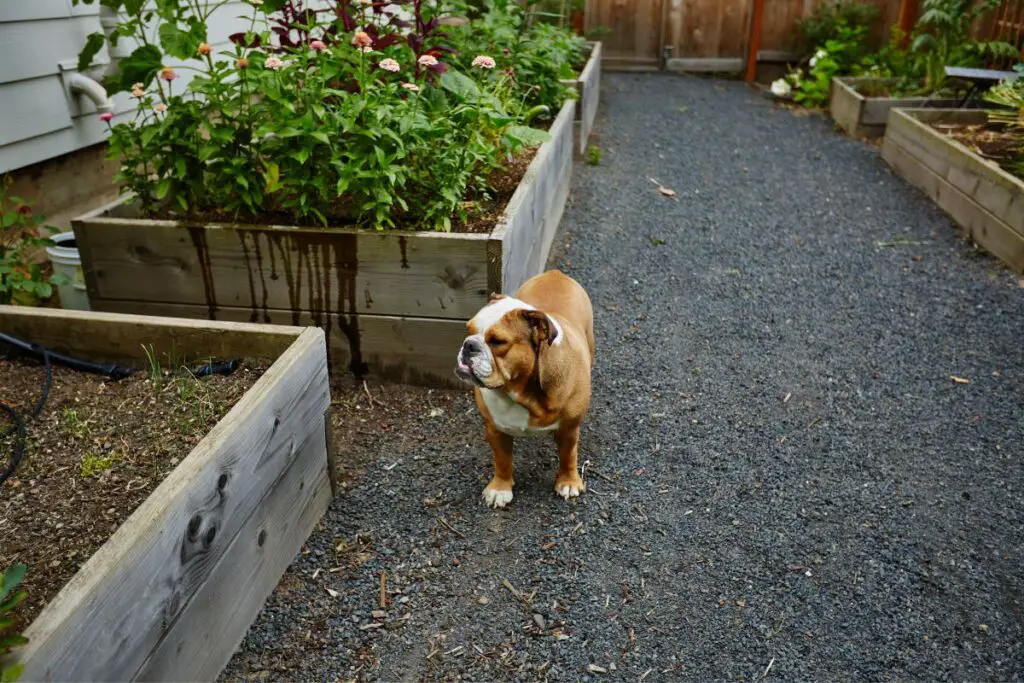
Bowing of the raised beds sometimes is the result of excessive water content and the repeated drying of the moist wood.
The more moisture the wood receives, the thinner and softer it will become.
Over time, the wood will lose its strength and won’t have the capacity to hold the soil and the plant.
So, the rule is to reduce the wood’s contact with water.
When you are watering the soil, the wood will also get damp to some extent. But, avoid wetting the woods too much.
Whenever you water the plants, concentrate more on the plants and the soil and avoid the woods as much as you can.
Or, you can water the plant when the top few inches have dried.
The more you minimize contact with water, the more your woods will last.
5. For better results, use pressure-treated lumber.
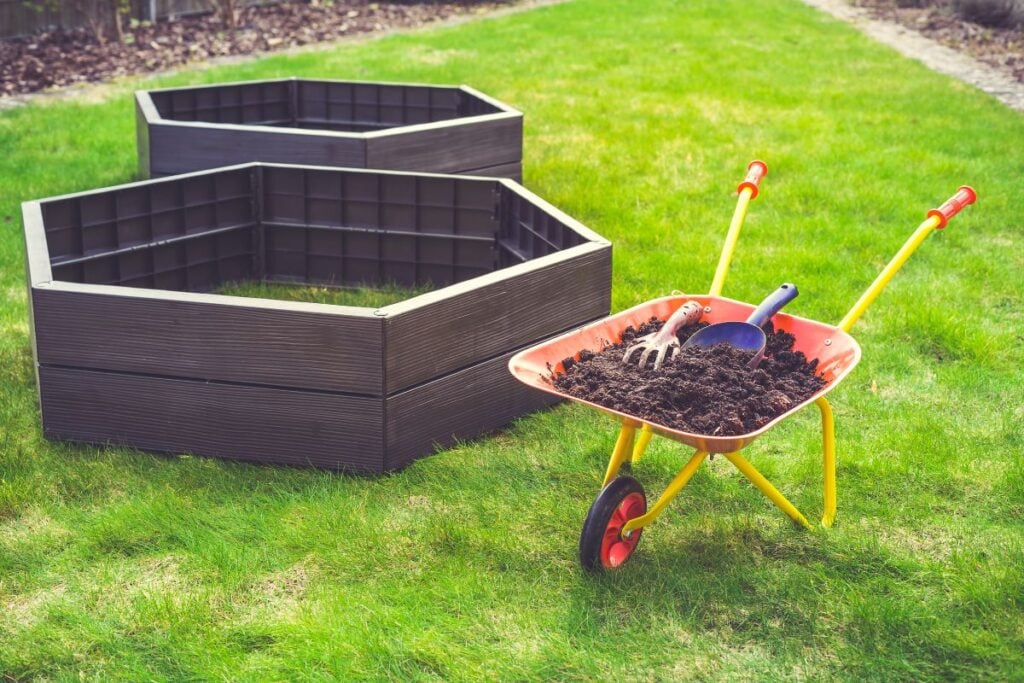
The lumber woods are treated with arsenic.
For this, you can get the most of them.
But, it used to be done during the 2000s.
So, be careful while using the lumbers.
However, pressure-treated lumbers are not used in organic farming.
The chemicals used in the lumber can leach into the soil and harm the plant.
To prevent such conditions, you can treat your lumber with wood sealers to prevent excessive contact with moisture.
Another way is to use plastics to line the raised beds made with lumber.
Wood sealers and plastics will reduce the direct contact with moisture and also keep the contaminants away from your woods and plants.
Minimizing the water content will also prevent heavy soil.
The lighter the soil, the more your bed will be in shape, and you can prevent bowing.
Final thoughts
There are several methods to prevent bowing or fix the bowing whenever they fall over. If you don’t want to put in any extra effort later, consider approaching the bowing prevention methods while creating the bed in the beginning.
If you want to do it later, use strong materials that should be able to hold the bed and prevent bowing for a very long time. Anchor the beds, place them over flat grounds, use strong materials to make the beds, and minimize water contact with the wooden raised beds.
Your raised beds will have to stay over inclined grounds if you live in slope areas. In that case, you must take care of the bowing and anchor your raised bed while creating the beds.
Reference: ScienceDirect, American Society of Agronomy, Noble Research Institute, Building a Raised Bed Garden, Developing design guidelines for calculating of width and height of raised bed.
